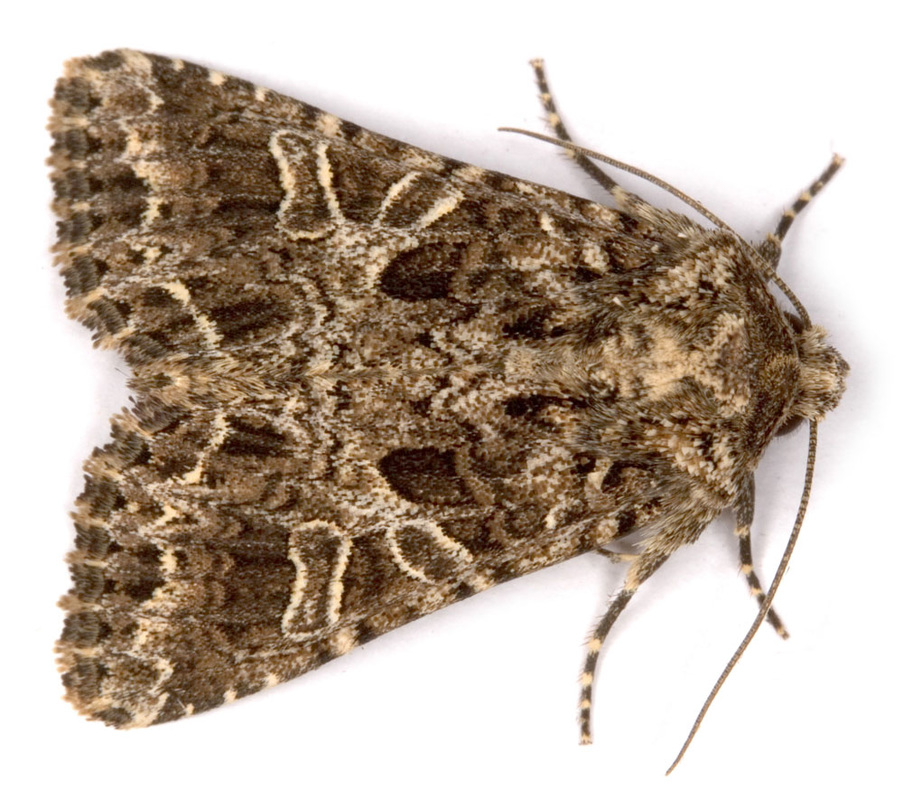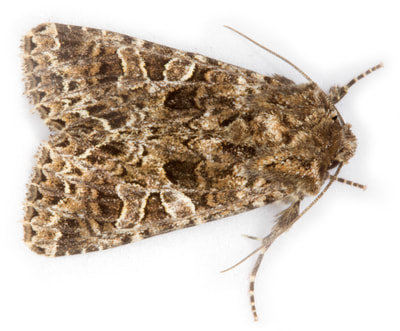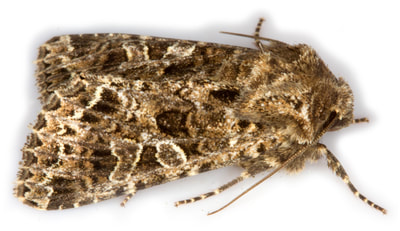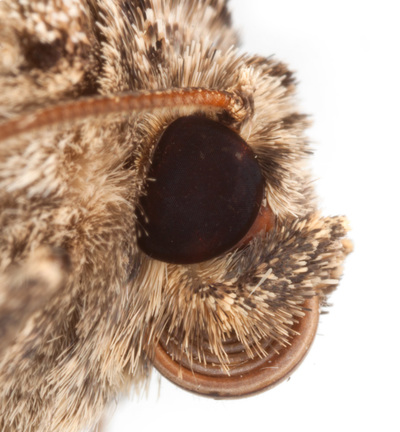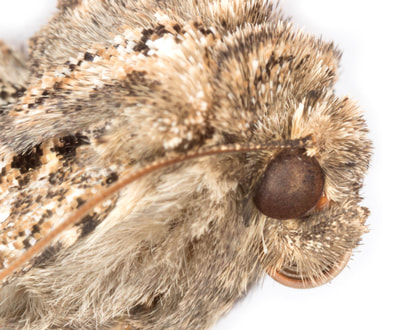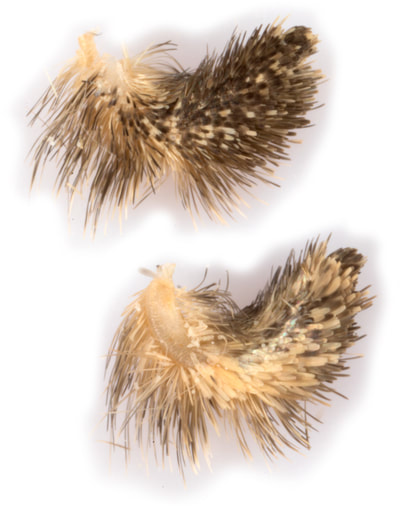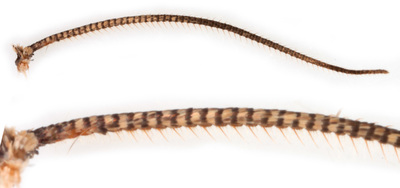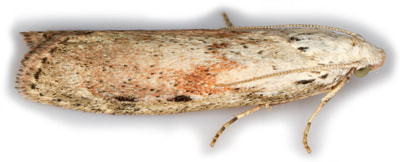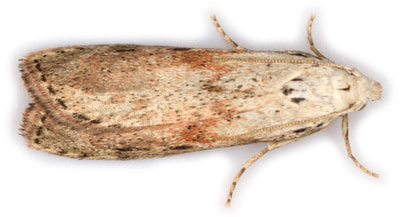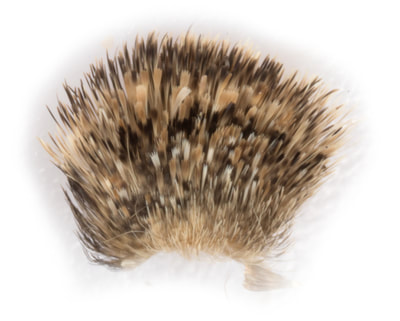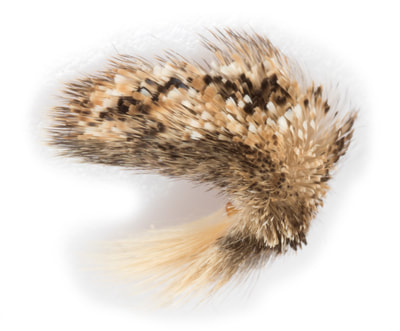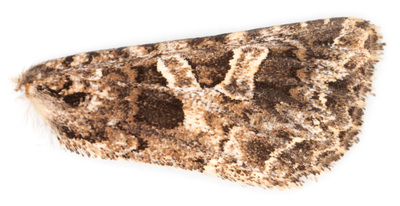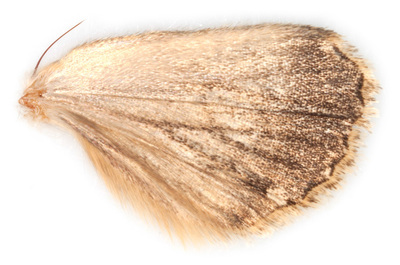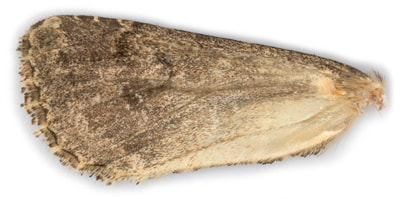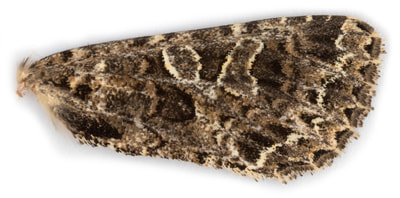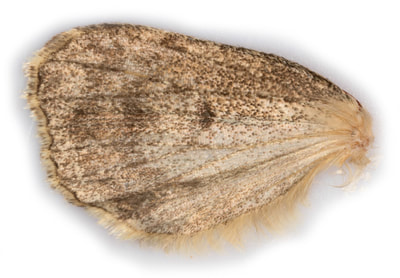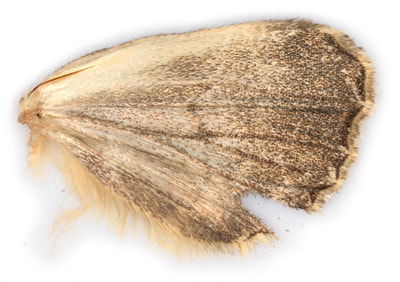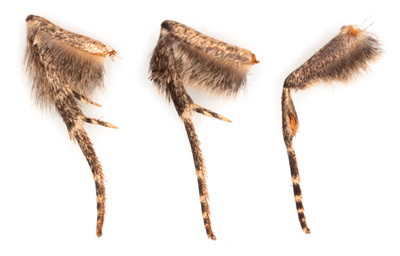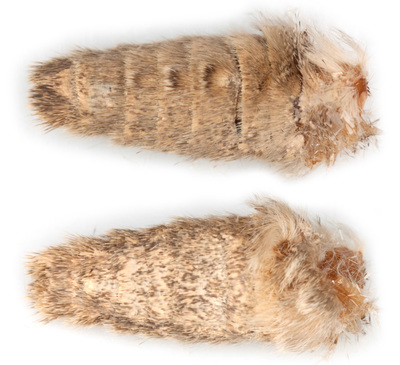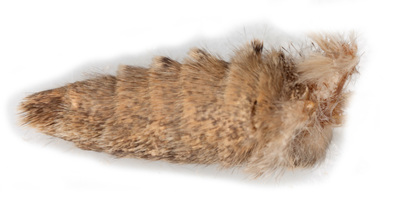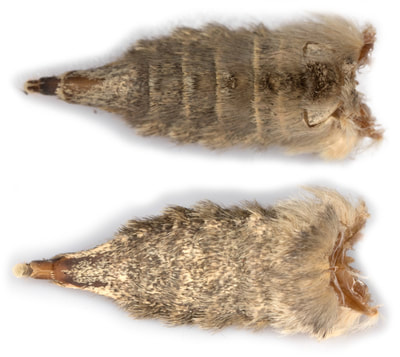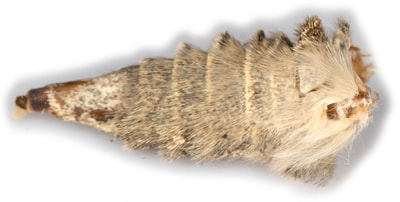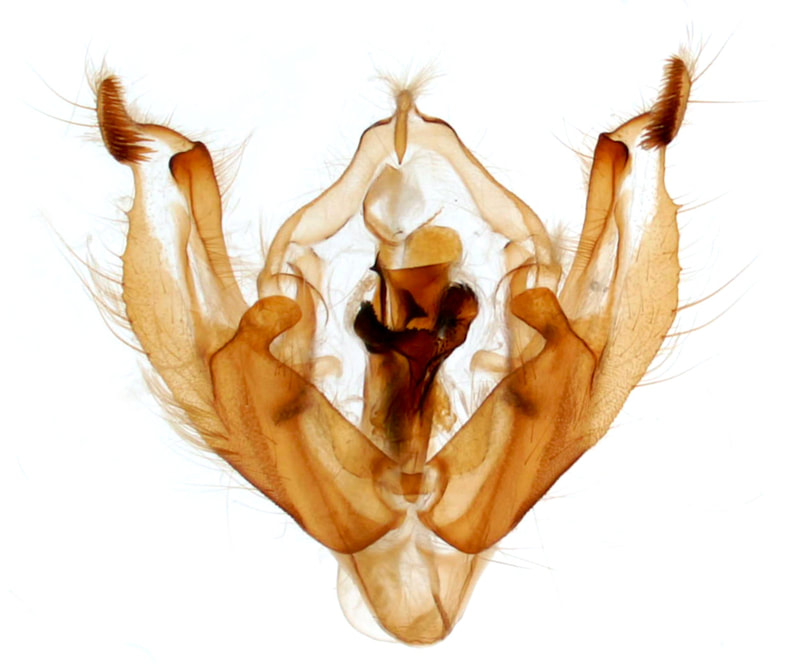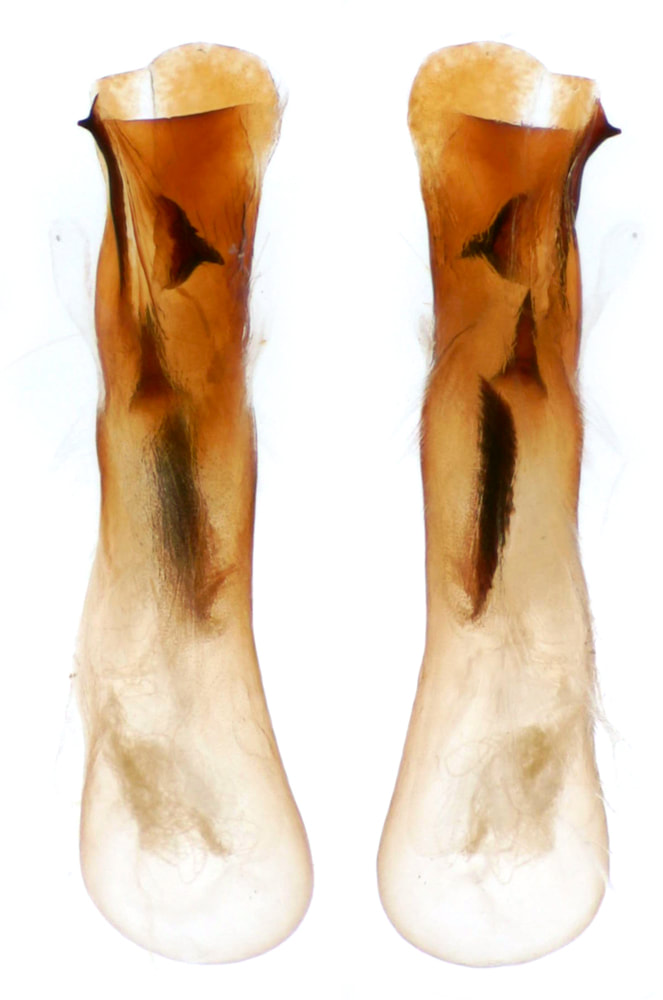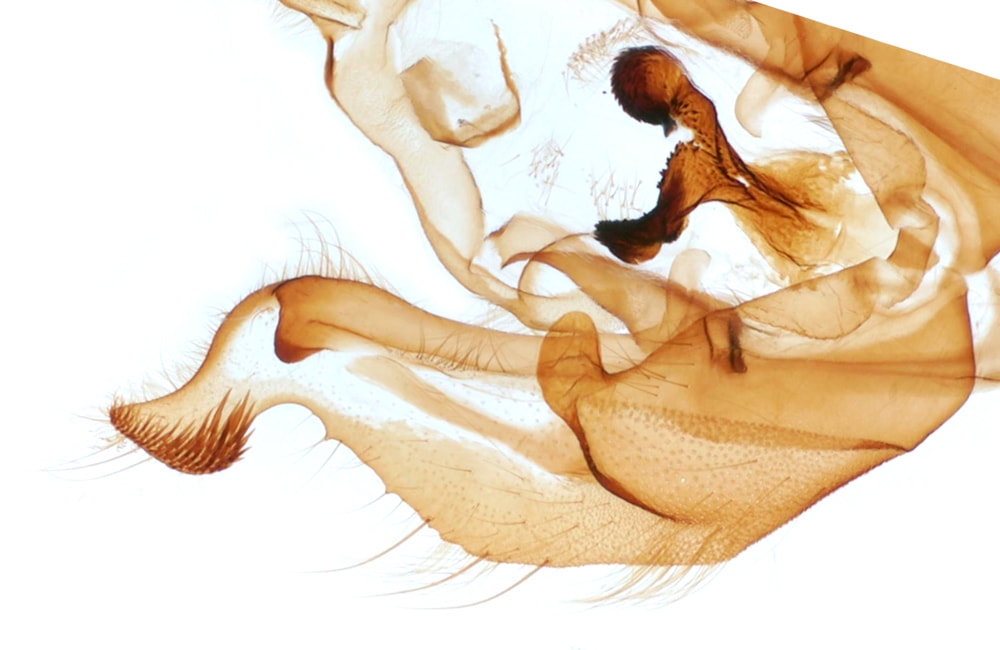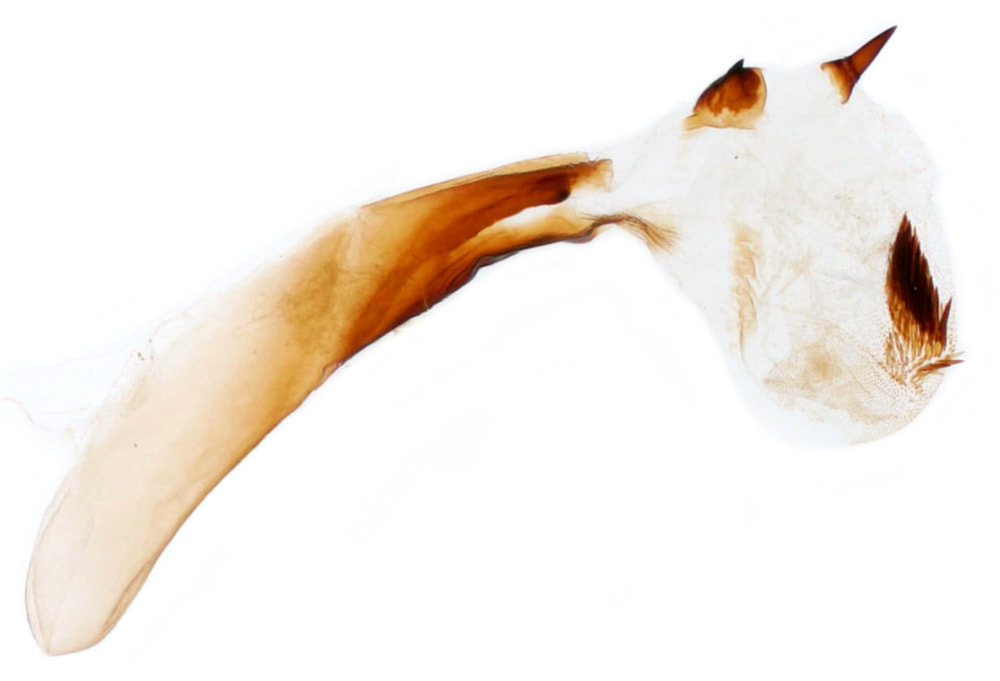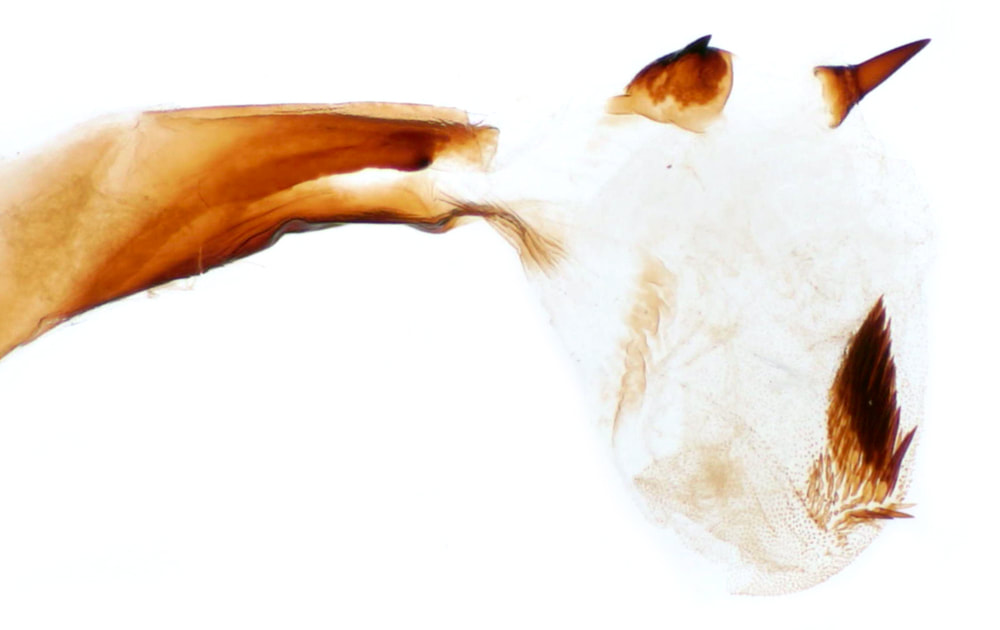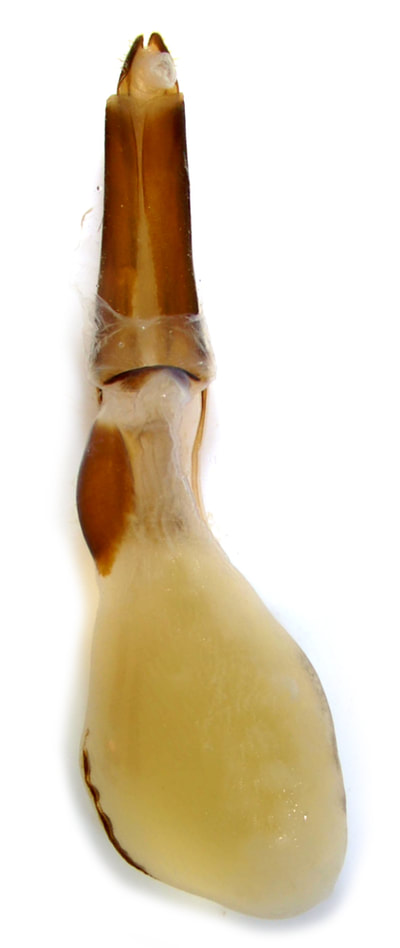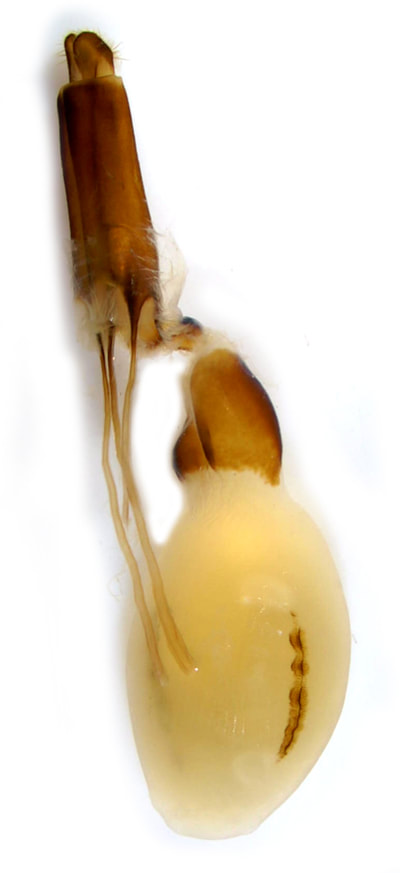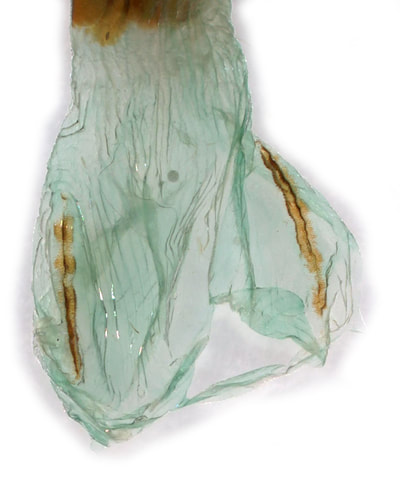73.281 Hadena (Hadena) bicruris (Lychnis)
fw: 14-17mm (Waring & Townsend), ws: 30-40mm (MBGBI9); bivoltine in south May-Jul, Aug-Sep, univoltine in north Jul-Aug; white/red campion (Silene latifolia/dioica), sweet william (Dianthus barbatus); common throughout GB.
ID: Forewing ground colour dark grey-brown; oval and kidney marks outlined in white, oval mark oblique; black dart mark; white zig-zag subterminal line.
When fresh Sideridis rivularis (Campion) has a purplish-pink marbling but this fades to leave a dark greyish brown with age and it then resembles H.bicruris. In S.rivularis the oval and kidney marks are usually joined by an extension of the dorsal end of the proximal margin of the kidney mark towards the dorsal end of the oval mark; in H,bicruris the oval and kidney marks are usually not joined and the kidney mark is not distorted. In S.rivularis the subterminal line dentate throughout while in H.bicruris it is less dentate, especially towards the dorsum.
Regarding the dorsal end of the subterminal line: MBGBI9 states re S.rivularis "final 2-3mm straight and reaches dorsum at a right angle or inclines slightly towards the base" and confusingly illustrates this by showing it not straight and inclined towards the termen ie away from the base (fig 17, p228); and re H.bicruris "joining dorsum at an angle of 45 deg, clearly inclined to and almost parallel with termen" and illustrates this as described (fig 18 p235). Waring & Townsend state: "On Campion (it) is zigzagged throughout and turns to finish usually at trailing corner (ie tornus). On Lychnis it is zig-zagged only near leading edge and in the middle and then curves more smoothly to finish on trailing edge, usually angled towards base of wing". I believe the crucial feature is that in S.rivularis the subterminal line is dentate throughout while in H.bicruris dentations are absent in the dorsal quarter. I am not convinced that the direction of the final "zig" is of much value.
All my specimens of H.rivularis show 2 pairs (costal and central) of pink-margined arrowheads projecting distally from the postmedian line, this feature is not seen in my specimens of H.bicruris. Additionally the postmedian line is much more distinct in all my specimens of S.rivularis than in any H.bicruris - but these features are not mentioned by MBGBI9 or Waring & Townsend.
When fresh Sideridis rivularis (Campion) has a purplish-pink marbling but this fades to leave a dark greyish brown with age and it then resembles H.bicruris. In S.rivularis the oval and kidney marks are usually joined by an extension of the dorsal end of the proximal margin of the kidney mark towards the dorsal end of the oval mark; in H,bicruris the oval and kidney marks are usually not joined and the kidney mark is not distorted. In S.rivularis the subterminal line dentate throughout while in H.bicruris it is less dentate, especially towards the dorsum.
Regarding the dorsal end of the subterminal line: MBGBI9 states re S.rivularis "final 2-3mm straight and reaches dorsum at a right angle or inclines slightly towards the base" and confusingly illustrates this by showing it not straight and inclined towards the termen ie away from the base (fig 17, p228); and re H.bicruris "joining dorsum at an angle of 45 deg, clearly inclined to and almost parallel with termen" and illustrates this as described (fig 18 p235). Waring & Townsend state: "On Campion (it) is zigzagged throughout and turns to finish usually at trailing corner (ie tornus). On Lychnis it is zig-zagged only near leading edge and in the middle and then curves more smoothly to finish on trailing edge, usually angled towards base of wing". I believe the crucial feature is that in S.rivularis the subterminal line is dentate throughout while in H.bicruris dentations are absent in the dorsal quarter. I am not convinced that the direction of the final "zig" is of much value.
All my specimens of H.rivularis show 2 pairs (costal and central) of pink-margined arrowheads projecting distally from the postmedian line, this feature is not seen in my specimens of H.bicruris. Additionally the postmedian line is much more distinct in all my specimens of S.rivularis than in any H.bicruris - but these features are not mentioned by MBGBI9 or Waring & Townsend.
§1 Eskdale, Cumbria; 21/08/2007; fw 16.8mm
§2 Foulness, Essex; 07/08/2010; male; fw 15.1mm
§3 Bampton Grange, Cumbria; 07/06/2017
§4 Bampton Grange, Cumbria; 16/06/2017; female; fw 15.3mm
§5 Strumpshaw Fen, Norfolk; 25/05/2018
§6 Foulness, Essex; 13/06/2020; male; fw 14.7mm
All images © Chris Lewis
§2 Foulness, Essex; 07/08/2010; male; fw 15.1mm
§3 Bampton Grange, Cumbria; 07/06/2017
§4 Bampton Grange, Cumbria; 16/06/2017; female; fw 15.3mm
§5 Strumpshaw Fen, Norfolk; 25/05/2018
§6 Foulness, Essex; 13/06/2020; male; fw 14.7mm
All images © Chris Lewis
Page published 24/10/2016 (§1-2) | §3&4 added 14/03/2018 | §5 added 09/03/2019 | §6 added 21/01/2021
